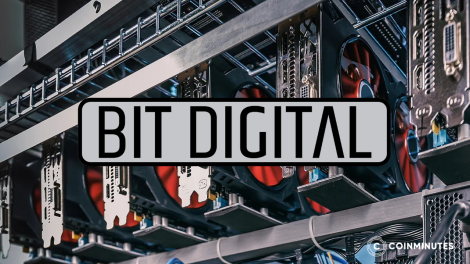What Is Cryptocurrency? Explore The Definition And How It Works

Money is an idea we all agree on. A piece of paper with a president's face on it or a number in a bank's computer. We trust it because a government or a bank stands behind it. It has rules. Then cryptocurrency came along. It’s an idea about money without a central bank or government. Just pure code, running on a network of machines that answer to no one. Some people see a revolution. Others see a solution looking for a problem. So what exactly is cryptocurrency? How does it work? CoinMinutes will give you the answer in this article.
What is Cryptocurrency?
At its core, a cryptocurrency is a form of digital asset based on a network that is distributed across a large number of computers. This decentralized structure is its most important feature. Traditional money (like the US Dollar) is controlled by central banks and governments. They can print more of it, they can freeze your account, they can tell you what you can and can’t do with your own money. Most cryptocurrencies operate outside of this system. They are managed by a peer-to-peer network of computers, following a set of rules defined by the protocol's code.
This means a few things:
-
No Central Authority: There’s no CEO of Bitcoin. No Ethereum headquarters you can call. The network is maintained by its users.
-
Censorship-Resistant: Because there's no central point of control, it's very difficult for any single entity to block or censor legitimate transactions.
-
Global and Borderless: You can send cryptocurrency to anyone, anywhere in the world, typically without needing to go through a traditional bank or deal with currency exchange hurdles.

There are thousands of different cryptocurrencies, each with its own specific features and purposes. While they are often referred to as "currencies," many are more like digital commodities, utility tokens for specific applications, or shares in a decentralized project. The entire market is a sprawling, chaotic ecosystem of different ideas, all built on the same foundational principles of cryptography and decentralization.
How Does Cryptocurrency Work?
So how does this digital money actually move? How does it stay secure without a bank or a government watching over it? It all comes down to a few key pieces of technology working together in a clever, and sometimes clunky, symphony.
The Role of Blockchain Technology
Most cryptocurrencies are built on something called a blockchain. A blockchain is essentially a digital ledger—a giant, shared notebook.
-
Distributed Ledger: Instead of this notebook being held by one person or company (like a bank's ledger), a copy of it is distributed across thousands of computers (nodes) all over the world.
-
Blocks and Chains: Transactions are grouped together into "blocks." Each new block is cryptographically linked to the one before it, forming a "chain." This makes the ledger chronological and very difficult to tamper with.
-
Immutability: Once a transaction is recorded in a block and that block is added to the chain, it is effectively permanent and cannot be altered or removed. To change a past transaction, you would have to alter that block and every single block that came after it, across thousands of computers simultaneously—a computationally impossible task for any secure network. This immutability is what creates trust in the system.
How Transactions Happen
Let's say you want to send some cryptocurrency to a friend.
-
Initiation: You create a transaction using your crypto wallet, specifying the recipient's public address and the amount you want to send.
-
Signing: You authorize this transaction using your private key. This creates a unique digital signature that proves you are the owner of the funds.
-
Broadcasting: Your wallet sends the signed transaction out to the cryptocurrency network.
-
Validation: The computers (nodes) on the network pick up your transaction. They check the digital signature to make sure it's valid and confirm that you have enough funds to send. This validation process is governed by the network's "consensus mechanism" (like Proof-of-Work or Proof-of-Stake).
-
Confirmation: Once validated, your transaction is bundled with other transactions into a new block. When that block is successfully added to the blockchain, your transaction is considered confirmed. The funds are now officially in your friend's wallet.
Security Features
The security of this whole operation rests on cryptography.
-
Public and Private Keys: As mentioned, users have a pair of cryptographic keys. The public key is used to generate an address for receiving funds. The private key is secret and used to authorize transactions. This system ensures that only the owner of the private key can spend the funds.
-
Hashing: Cryptographic hashing is used throughout the system. It turns large amounts of data into a short, fixed-length string of characters. This is used to link blocks together securely and to help create addresses, among other things.
-
Decentralization: The distributed nature of the blockchain itself is a massive security feature. There is no central server to hack, no single point of failure. An attacker would have to compromise a massive portion of the network's computers to successfully alter the ledger.
Wallets and Keys
To interact with a cryptocurrency network, you need a wallet. A crypto wallet doesn't actually "store" your coins—your coins always exist on the blockchain. The wallet is a piece of software or hardware that stores your public and private keys, allowing you to manage your funds and interact with the network.
-
Hot Wallets: These are software wallets connected to the internet (on your phone or computer). They are convenient for frequent use but more vulnerable to hacking.
-
Cold Wallets: These are hardware devices that store your keys offline. They are much more secure but less convenient for daily transactions. The core principle is personal responsibility. If you manage your own keys, you are your own bank. If you lose them, your money is gone.
Popular Cryptocurrency Networks
The crypto world is a zoo of thousands of different coins. Most are forgettable flashes in the pan. But a few big beasts dominate the landscape. Here are some of the heavyweights you'll hear about most often.
Bitcoin (BTC)
Bitcoin was the first cryptocurrency, created in 2009 by an anonymous person or group known as Satoshi Nakamoto. It was designed to be a peer-to-peer electronic cash system. Over the years, its primary narrative has shifted towards being a "store of value," or "digital gold." It has a fixed supply of 21 million coins, which creates scarcity. It is secured by the most powerful computer network in the world using a Proof-of-Work consensus mechanism. Its development is slow and conservative, prioritizing security and stability. For many, Bitcoin is synonymous with cryptocurrency itself.

Ethereum (ETH)
If Bitcoin is digital gold, Ethereum is digital oil. Launched in 2015, Ethereum is not just a cryptocurrency; it's a decentralized "world computer." It's a platform built for running smart contracts—self-executing pieces of code. This programmability allows developers to build decentralized applications (dApps) for a huge range of purposes, most notably Decentralized Finance (DeFi) and NFTs. Its native currency, Ether (ETH), is used to pay for transactions ("gas") on the network and for staking in its Proof-of-Stake security model. It’s the foundation for the vast majority of the altcoin ecosystem.
Tether (USDT)
Tether is a "stablecoin", a different kind of beast. Its purpose is to maintain a stable value, pegged 1:1 to the U.S. dollar. While other cryptos are on a price rollercoaster, USDT is designed to always be worth about $1. It achieves this by claiming to hold reserves of dollars and other assets to back every USDT in circulation. It acts as the primary lubricant for the crypto trading world, allowing traders to move in and out of volatile positions without having to cash out to traditional fiat currency. It’s controversial, but undeniably one of the most used tokens in the entire ecosystem.
XRP
XRP is the native cryptocurrency of the XRP Ledger, a blockchain created by the company Ripple Labs. It focuses on facilitating fast, cheap, and reliable international payments and cross-border settlements for financial institutions. The goal is to provide an alternative to slow and expensive traditional systems like SWIFT. XRP transactions are very fast (3-5 seconds) and cost a tiny fraction of a cent.
Binance Coin (BNB)
BNB is the native token of the BNB Chain, a blockchain developed by the world's largest cryptocurrency exchange, Binance. It's used to pay for fees on the network and within the massive Binance ecosystem. Its value is closely tied to the success and utility of the Binance exchange and its associated blockchain. It’s a prime example of a corporate-backed crypto network.
Pros and Cons of Cryptocurrency
This technology has its light and its shadows. There are reasons people are drawn to it. There are also reasons to be cautious. Here’s a look at both sides of the coin.
Pros of Cryptocurrency
-
Decentralization: The networks are run by a global community, not a single company or government. This makes them resistant to censorship and single points of failure. Your account can't be frozen by a disgruntled politician.
-
Transparency: Most cryptocurrency transactions are recorded on a public blockchain. Anyone can view the transaction history, which can provide a high level of transparency.
-
User Control and Self-Custody: With crypto, you can be your own bank. By controlling your private keys, you have absolute ownership of your funds. No one can take them from you without your permission (or your keys).
-
Lower Transaction Costs: Sending money across borders can be much faster and cheaper with cryptocurrency than with traditional banking systems.
-
Financial Inclusion: For people in parts of the world with unstable national currencies or limited access to traditional banking services, cryptocurrencies can offer a way to store value and participate in the global economy. Anyone with an internet connection can use it.
Cons of Cryptocurrency
-
Extreme Volatility: The prices of cryptocurrencies can swing wildly. It’s common for a coin to lose 20%, 50%, or even more of its value in a short period. This makes it a very risky investment and difficult to use as a stable currency for everyday payments.
-
Security Risks: While the underlying blockchain technology is secure, users are vulnerable. The space is rife with scams, from phishing attacks to fraudulent projects. If your crypto is stolen, it's most likely gone for good. Protecting yourself requires constant vigilance.
-
Scalability Issues: Many popular cryptocurrencies have faced challenges with scalability, including big networks like Bitcoin and Ethereum. When the networks get busy, transaction times can slow down, and fees can become very high, making them impractical for small transactions.
-
Complexity: Cryptocurrency is not user-friendly. Understanding how to securely store and transact with it requires a huge amount of technical knowledge. The concepts of private keys, wallets, and addresses can be daunting for beginners.
-
Uncertain Regulatory Environment: Governments around the world are still figuring out how to regulate cryptocurrencies. The threat of unfavorable regulations or outright bans creates uncertainty for investors and businesses.
-
Use in Illicit Activities: The anonymous-like nature of some transactions makes it attractive for illegal activities, which draws negative attention from regulators.
Is Cryptocurrency Legal?
The question of legality is a maze. There’s no simple yes or no answer; it depends entirely on where you stand on the planet. The regulatory landscape for cryptocurrency is a messy, evolving patchwork that varies from one country to the next.

Cryptocurrencies are legal in many major economies, including the United States, Canada, the United Kingdom, and most of the European Union. These countries treat digital cash as property or assets for tax purposes. There are also regulations in place for exchanges and other businesses operating in the space. These regulations are focused on things like Anti-Money Laundering (AML) and Know Your Customer (KYC) rules.
Some other countries have taken a much harder line. China has banned most cryptocurrency activities, including trading and mining. Other countries like Egypt, Bolivia, and Algeria have similar restrictions. The reasons often cited are concerns about financial stability, capital flight, and illicit activities.
You need to understand that this is not a settled issue. Governments everywhere are actively debating and formulating new rules. What is legal today might be restricted tomorrow. What is a gray area could become a fully regulated market. Keeping up with the shifting legal sands is a full-time job for lawyers and compliance officers, and a constant source of anxiety for the industry. Any major regulatory news can send shockwaves through the market.
Is It Safe to Invest in Cryptocurrency?
Cryptocurrency is a high-risk and speculative venture. It's a trip to the Wild West, where you might strike gold, but you're just as likely to get shot by bandits or die of dysentery.
Let's be clear about the risks:
-
Market Volatility: Prices are driven by hype, fear, technological developments, regulatory news, and pure speculation. The value of your investment can be cut in half at any time. The entire market capitalization of all crypto can swing by hundreds of billions of dollars in a single day.
-
No Investor Protection: If you invest in the stock market and your broker goes bankrupt, there are insurance schemes (like SIPC in the U.S.) that can help protect your assets. In the crypto world, for the most part, you're on your own. If the exchange you use gets hacked or goes bust (like FTX), your money is likely gone for good. There’s no government bailout coming.
-
Scams and Fraud: The crypto space is a paradise for scammers. From phishing attacks that steal your private keys to "rug pulls" where developers of a new coin run off with investors' money, the ways to lose your money are endless and creative.
-
Market Manipulation: The market is less regulated than traditional financial markets, making it susceptible to manipulation by large players, often called "whales."
So, is it "safe"? No. Can people make money? Yes, some do, often by getting in early, being lucky, or having a high tolerance for risk and a deep understanding of the market. But many more lose money. Anyone telling you that crypto investing is a safe or guaranteed way to get rich is either a fool or a liar. It should be treated as what it is: a highly speculative asset class. You should never invest more than you are truly willing to lose.
The Bottom Line
Cryptocurrency is a large and expensive experiment in building a new kind of financial plumbing. It's an attempt to separate money from the state. It has created new possibilities and new ways to lose a fortune overnight. It’s a technology with no central command, pulling in idealists, engineers, speculators, and criminals alike. What it will become—a revolutionary new layer of the internet or a footnote in financial history—is a story that is still unfolding.
 English
English
 Vietnamese
Vietnamese
















